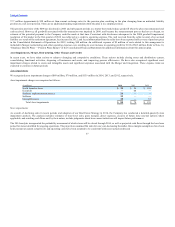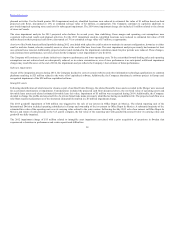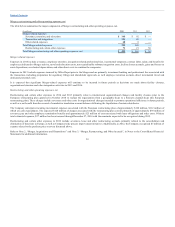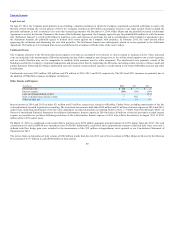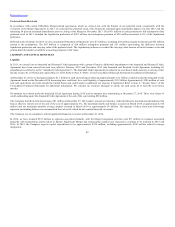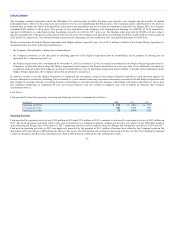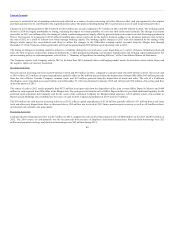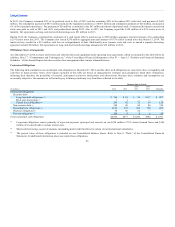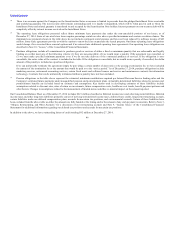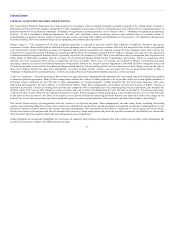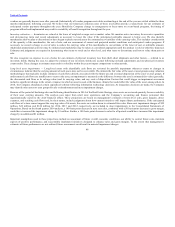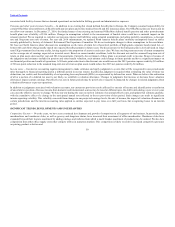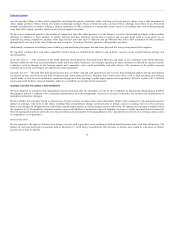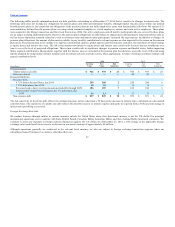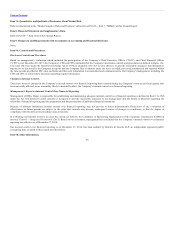OfficeMax 2014 Annual Report Download - page 49
Download and view the complete annual report
Please find page 49 of the 2014 OfficeMax annual report below. You can navigate through the pages in the report by either clicking on the pages listed below, or by using the keyword search tool below to find specific information within the annual report.
Table of Contents
Our Consolidated Financial Statements have been prepared in accordance with accounting principles generally accepted in the United States of America.
Preparation of these statements requires management to make judgments and estimates. Some accounting policies and estimates have a significant impact on
amounts reported in these financial statements. A summary of significant accounting policies can be found in Note 1, “Summary of Significant Accounting
Policies,” of the Consolidated Financial Statements. We have also identified certain accounting policies and estimates that we consider critical to
understanding our business and our results of operations and we have provided below additional information on those policies. No significant changes have
been made during 2014 to the methodologies used in preparing the estimates discussed below.
Merger impacts — The integration of two like companies generally is expected to provide benefits from reduction of duplicate functions and greater
economies of scale. Such benefits will be reflected as lower operating costs as the integration continues. However, the integration also results in significant
costs related to the closure of facilities, severance of employees and incurring incremental costs required to merge the two companies where such costs are not
expected to be incurred in periods following the integration. During 2014, the Company recognized $332 million of Merger costs and costs are expected to
continue through the integration timeline which is generally expected to be complete by 2016. Also, gains and losses may be recognized from dispositions of
Office Depot or OfficeMax properties that are no longer in use following Merger-related facility consolidation and closure. Gains are recognized when
realized; losses are recognized when closure or disposition decisions are made. These costs, net of gains, are included in Merger, restructuring and other
operating expenses, net in the Consolidated Statements of Operations. Refer to the Long-lived asset impairments, Goodwill and other intangible assets, and
Closed store accruals sections below for additional Merger-related impacts. The accounting policies for the recognition of these Merger costs are the same as
those the Company follows for other asset impairments, severance accruals, facility closure costs and gains and loss on dispositions. Refer to Note 1,
“Summary of Significant Accounting Policies,” of the Consolidated Financial Statements for further discussion of these policies.
Vendor arrangements — Inventory purchases from vendors are generally under arrangements that automatically renew until cancelled with periodic updates
or annual negotiated agreements. Many of these arrangements require the vendors to make payments to us or provide credits to be used against purchases if
and when certain conditions are met. We refer to these arrangements as “vendor programs.” Vendor programs fall into two broad categories, with some
underlying sub-categories. The first category is volume-based rebates. Under those arrangements, our product costs per unit decline as higher volumes of
purchases are reached. Current accounting rules provide that companies with a reasonable basis for estimating their full year purchases, and therefore the
ultimate rebate level, can use that estimate to value inventory and cost of goods sold throughout the year. We believe our history of purchases with many
vendors provides us with a basis for our estimates of purchase volume. If the anticipated volume of purchases is not reached, however, or if we form the belief
at any point in the year that it is not likely to be reached, cost of goods sold and the remaining inventory balances are adjusted to reflect that change in our
outlook. We review sales projections and related purchases against vendor program estimates at least quarterly and adjust these balances accordingly.
The second broad category of arrangements with our vendors is event-based programs. These arrangements can take many forms, including advertising
support, special pricing offered by certain of our vendors for a limited time, payments for special placement or promotion of a product, reimbursement of costs
incurred to launch a vendor’s product, and various other special programs. These payments are classified as a reduction of costs of goods sold or inventory,
based on the nature of the program and the sell-through of the inventory. Some arrangements may meet the specific, incremental, identifiable cost criteria that
allow for direct operating expense offset, but such arrangements are not significant.
Vendor programs are recognized throughout the year based on judgment and estimates and amounts due from vendors are generally settled throughout the
year based on purchase volumes. The final amounts due from
47


